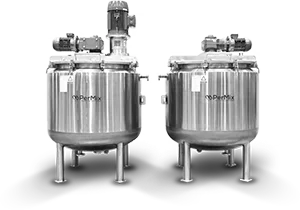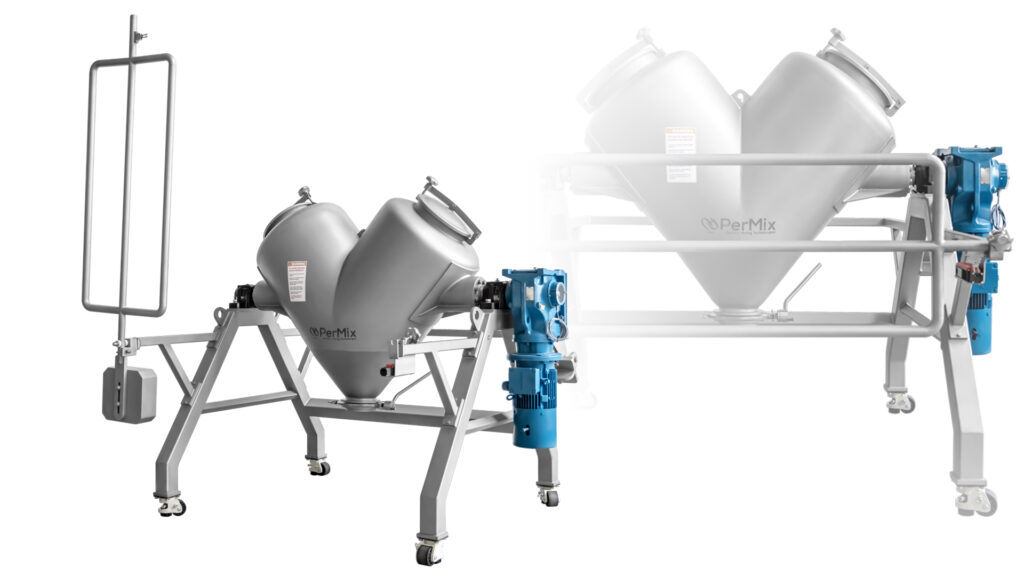What Is The Performance Difference Between A Double Cone Mixer & A V-Blender
The performance difference between a double cone mixer and a V-blender lies in their design and mixing capabilities. Both types of mixers are commonly used in the pharmaceutical, food, and chemical industries for blending powders and granular materials. Here are some key differences in their performance:
- Shape and Design:
- Double Cone Mixer: This type of mixer has two conical-shaped ends connected by a cylindrical section. The conical shape allows for a gentle and efficient mixing process. The material is lifted up and then cascades back down, promoting good blending.
- V-Blender: The V-blender, as the name suggests, has a V-shaped container. The V shape encourages material to move in a “V” pattern during blending. This design is known for promoting good blending of materials.
- Mixing Efficiency:
- Double Cone Mixer: Due to its conical shape, the double cone mixer is often considered better for blending free-flowing powders and materials with disparate particle sizes. It provides a good combination of axial and radial movement of the material, leading to efficient mixing.
- V-Blender: V-blenders are also effective for blending free-flowing powders, but they may be less suitable for materials with significant differences in particle size.
- Batch Size and Loading/Unloading:
- Double Cone Mixer: Double cone mixers are versatile and can handle a wide range of batch sizes. Loading and unloading are typically straightforward, and the design allows for easy access.
- V-Blender: V-blenders are also versatile but may have limitations with very small or very large batch sizes. Loading and unloading can be more challenging for larger units.
- Material Characteristics:
- Double Cone Mixer: Well-suited for cohesive materials and materials with varying particle sizes.
- V-Blender: Effective for free-flowing materials but may face challenges with cohesive materials.
- Mixing Time:
- Double Cone Mixer: Mixing times can vary but are generally relatively short due to the efficient mixing action.
- V-Blender: Mixing times can be longer compared to double cone mixers, especially for materials with less favorable flow characteristics.
- Energy Consumption:
- Double Cone Mixer: May have lower energy consumption compared to some other mixing designs.
- V-Blender: Energy consumption can vary based on the specific design and operational parameters.
In summary, the choice between a double cone mixer and a V-blender depends on the specific characteristics of the materials being processed, the desired batch size, and other operational considerations. Both mixers have their strengths and limitations, and the selection should be based on the specific requirements of the mixing process.


